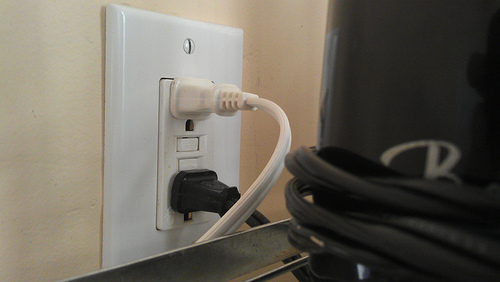Reasons to Install GFCI Outlets
 Have you ever heard people talking about "GFCI outlets" and wondered what in the world they're talking about, let alone whether it's relevant to you? If so, you're not alone: many people are confused about what GFCI outlets are, how they work, and why they matter. We're here to straighten you out -- and hey, maybe you should pass the word along!
Have you ever heard people talking about "GFCI outlets" and wondered what in the world they're talking about, let alone whether it's relevant to you? If so, you're not alone: many people are confused about what GFCI outlets are, how they work, and why they matter. We're here to straighten you out -- and hey, maybe you should pass the word along!
What is a GFCI outlet and how do they work?
A Ground Fault Circuit Interrupter (GFCI) outlet is designed to respond when the circuit detects a ground fault, which happens when electrical current escapes from the circuit. Under normal conditions, when an appliance or device is plugged in, it completes the circuit, and everything runs smoothly as electricity moves from the hot to neutral poles in the circuit. But if an appliance is dropped in water or a similar safety problem arises, it creates a ground fault, with some of the electricity escaping through the ground...and anything or anyone that happens to be in the way.
Normal electrical circuits remain operational in these situations, causing burns, shock, and death in some cases. GFCIs, however, cut off when they sense a ground fault. They are extremely sensitive and fast acting, reacting to promptly stop the flow of current as soon as they notice a disparity between the current flowing out of the hot pole and into the neutral pole.
GFCI protection can be provided in several ways. One is an actual electrical receptacle, AKA outlet. You may have seen a GFCI outlet without realizing it: it looks like a normal outlet, except that it has "test" and "reset" buttons. Depending on the model, the buttons may be colored, and the outlet may have an indicator light to show it's working.
Portable GFCI protection is also available in the form of specially equipped extension cords and modular plugs. You plug the GFCI plug into the wall, and then plug in the item you're using. Additionally, GFCI breakers can be wired directly into your breaker box.
Why do they matter?
Well, if you want to be practical about it, the electrical code in many regions requires the use of GFCI outlets in bathrooms, kitchens, outdoor areas, and garages. If you want a code-compliant home, you'll have to install them during construction, remodeling, or electrical upgrades. Landlords may want to consider upgrading even if they aren't planning work, because they could be liable if something happens to a tenant because of substandard wiring.
But, more importantly, a GFCI can prevent shock, serious injury, or death, and installing one is a very easy project. Anything that reduces the risk of electricity-related dangers is a good thing, and these devices provide excellent coverage in high-risk areas of the home and shop. Qualified electricians will install them automatically in areas where they are required by the electrical code when they perform work, and you can also request them.
Be aware that because of their complexity, GFCIs need to be regularly tested to make sure they are functioning. You can do this by pressing the "test" and then "reset" buttons. If the GFCI does not cut power when you hit "test," it is not working properly, and you need to contact an electrician to discuss the issue. An electrician is also needed if a GFCI is randomly cutting out, or if you notice strange noises or smells around an outlet.
Katie Marks writes for Networx.com.
Updated June 5, 2018.
Looking for a Pro? Call us (866) 441-6648

Electrical Average Costs
Electricians Experiences

All Our New Home’s Electrical Work Done By One Skilled Contractor

Parking Lot Lights Restored So Employees Can Reach Cars Safely



